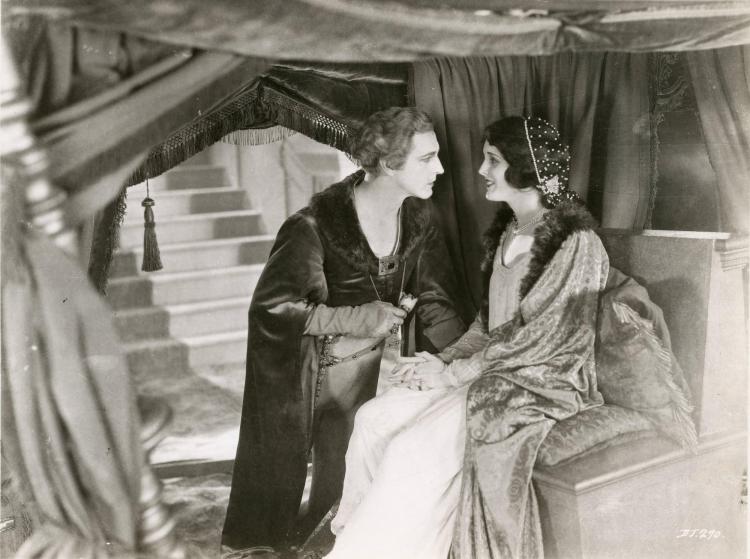In a newly published paper, CU Boulder’s Emmy Herland explores how the very old story of Don Juan remains relevant through its ghosts
Time and the popular imagination have been kind to Don Juan—perhaps too kind.
As written in “El burlador de Sevilla y convidado de piedra” by Andrés de Claramonte (previously attributed to Tirso de Molina) around 1635, Don Juan is a liar and unrepentant manipulator who falsely promises women marriage to coerce them into sex. He fights and kills the father of one of his victims and the father, Don Gonzalo, eventually returns to haunt Don Juan and drag him to hell.
These days, Don Juan has been smoothed into more of an incorrigible seducer and a shameless, though often charming, rogue. Little mention is made of dark intentions or a dark, perhaps absent, heart. It’s up to the ghosts to point those out.

CU Boulder researcher Emmy Herland studies Early Modern Spain, particularly representations of ghosts and other supernatural phenomena in the literature and theater of the era.
In a newly published exploration of haunting and the Don Juan legend, Emmy Herland, a University of Colorado Boulder teaching assistant professor of Spanish and Portuguese, compares two modern theatrical adaptations of the Don Juan legend to highlight not only the vital role ghosts play in understanding the character, but to illuminate the theater as a meeting place between the living and the dead.
“There are a lot of reasons this play has lived on for so long,” Herland says. “Don Juan is wealthy, smart, he has a lot of social pull and he is able to keep running away, keep getting away with how he treats women, and embodies a justice system that isn’t working. The supernatural aspect of the ghosts could be seen as a desire for justice—this idea that we can’t catch him, but God is going to come in and solve it.”
Ghosts as messengers
Herland focuses on Octavio Solis’ 1987 “Man of the Flesh” and “Dom Juan: Les morts ne sont pas morts” by José Gabriel López de Antuñano and Ignacio García, first staged in December 2020 in Abidjan, Ivory Coast. Both adaptations present ghosts slightly different than the ghost of Don Gonzalo in the 17th century, but “what unites the spectral characters within the theater to the ghostly elements of the theater is the search for justice for the dead,” Herland writes. “These adaptations, like the ghosts that they stage, revive the past in order to reveal something important about the present into which they are summoned.”
Solis’ Don Juan is haunted by the ghost of his mother, who is accompanied by the ghost of Luis, brother of one of Juan’s victims, and the ghost of Anne, whom Juan considers his ideal woman and whom he smothered to death while declaring his love.
In “Dom Juan,” three of the ghosts are victims of his “seductions”—women he sexually assaulted and murdered, who revive his last victim, the brother of a woman he intended to rape, to help them pursue justice.
“The Ivory Coast adaptation is a one-act play,” Herland explains. “The women are killed very quickly and very early on, and it’s so unfair. You feel so mad at this character who’s just strangled all these women, who’s awful throughout the play, threatening to rape a fourth victim who he never actually rapes, but kills her brother. He’s horrible and you want to see him face justice, so it’s incredibly satisfying to believe the women could be the ones to fix it.”
In Solis’ “Man of the Flesh,” Don Juan is haunted by the ghost of his mother, Concepción, who is conjured by her husband, looking for help managing their son’s behavior.
“She has a line where she says, essentially, ‘I’m not responsible for how you’ve turned out; the dead are not responsible for the living,’” Herland says. “She is also coming in to say, ‘I created this mess; this is my son, he’s not listening to his father, he didn’t listen to me when I was alive.’
“It’s also interesting because she is not a character whom he has personally wronged. In many adaptations, he is killed by the ghost of someone he killed—the unfinished ghost. It’s direct revenge, but we don’t have that here—it’s a different dynamic, a lot more complex. She’s revealed at the end to be an incarnation of death itself. She starts to violently seduce him, this death who is in form of his mother, to prove to him that seduction is wrong, that his way of seducing is really harmful to women.”

In the 1926 film "Don Juan," Lionel Barrymore (left, with Mary Astor) played Don Juan as a famous lover and adventurer.
‘The story becomes the ghost’
Adaptations of Don Juan are, in many ways, ideal for understanding the associations between haunting and theater, Herland says. Each adaptation is haunted by all previous iterations of the story it is telling, and each production is haunted by its text—perpetuating the haunting and allowing ghosts to haunt the audience.
In “Dom Juan,” the women he killed become a chorus of sorts, haunting not only him but the audience, “reminding them of the violent injustices perpetrated against women every day,” Herland writes. “In other words, this chorus of women will not let Dom Juan forget his individual crimes, but they also will not let the audience forget the larger social inequalities that his actions represent.”
That throughline from the 17th century to modern times is what drew Herland to works originating more than 400 years ago in her undergraduate studies, before she was even aware of the area of humanities specifically studying spectrality and hauntology.
“How do we talk about and stage the 17th century now?” Herland says. “How do we adapt it in a way that’s relevant now? In Solis’ play, some of the women Don Juan has previously impregnated, some of whom are underage, are also undocumented. When they say, ‘You have to make this right,’ he says. ‘I’ll just call ICE; you have no power here.’ So, there are a lot of issues that are incredibly relevant today.”
The telling and retelling of Don Juan also raises issues of justice, and whether it is served in acts of revenge, Herland says. Does the omnipotent presence of ghosts alter the equation of justice?
“It’s so interesting to think about all adaption as ghostly and all theater as ghostly,” Herland says. “In theater adaptations of historical stories, why are we still talking about them? How are they still relevant? How are they still relevant in different parts of world, through history?
“I think it connects back to idea of history keeps repeating, which is a really ghostly idea. These stories are going to keep circling back, until we can imagine the story becomes the ghost.”
Top image: "The Story of Constance and Don Juan" by Hendrik Carré (1710)
Did you enjoy this article? Subcribe to our newsletter. Passionate about Spanish and Portuguese? Show your support.



